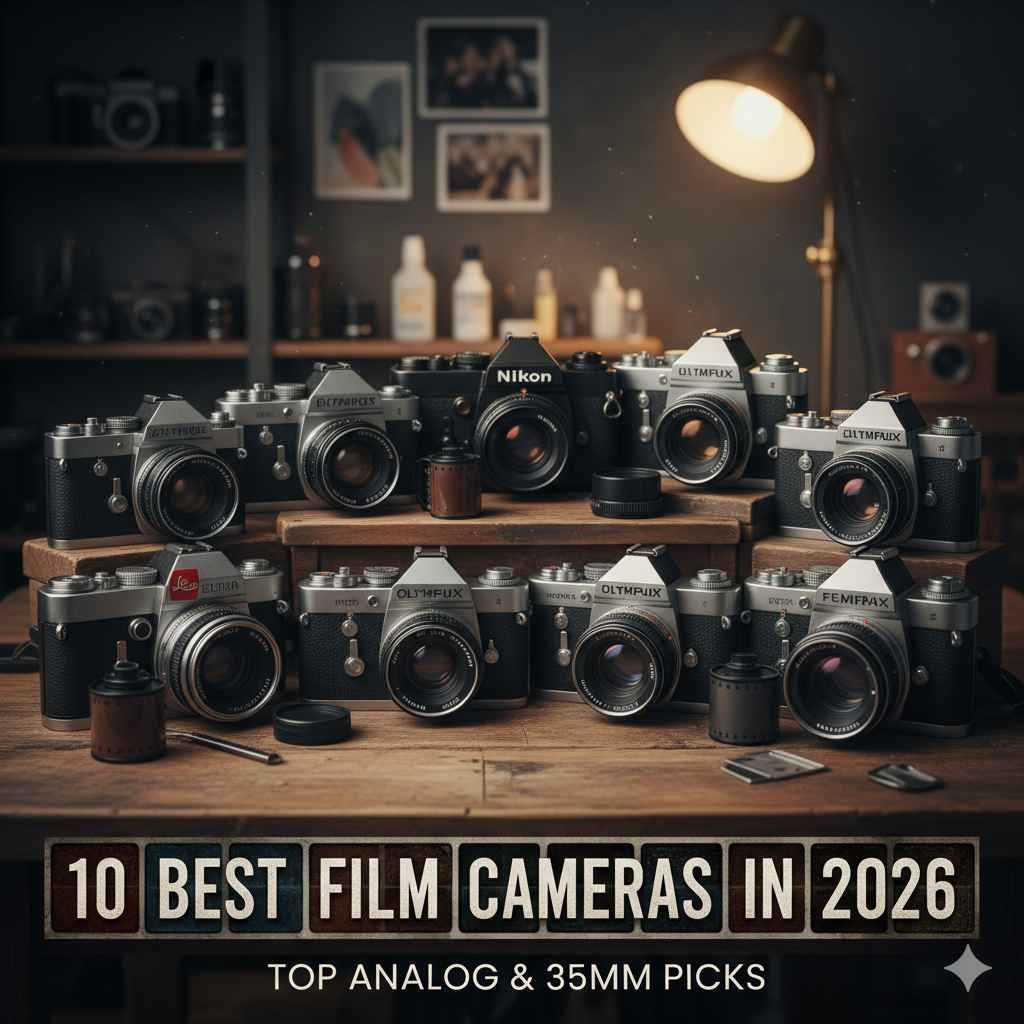
10 Best Film Camera in 2026
Film photography is having a genuine revival in 2025. In a world saturated by smartphones and mirrorless digital sensors, the allure of a film camera in 2026 lies in its tactile feel, deliberate pace and the joy of seeing a roll of film developed. For travellers exploring the majestic landscapes and cultural richness of Nepal from the snow-capped peaks of the Himalayas to the bustling alleys of Kathmandu a film camera offers something different: texture, nostalgia, and a moment captured in time.
Choosing the right film camera in 2026 means thinking not just about specs, but about how you shoot, where you shoot and what story you want to tell. Below we’ll explore ten excellent picks from beginners’ friendly to premium pro-level — with full spec tables, approximate prices and guidance so you can pick the best film camera in 2026 for your style and budget.
Why Choose a film camera in 2026 for filming?
Before diving into specific models, let’s consider why opting for a film camera might be a smart creative decision:
Aesthetic & medium: The look of images from a film camera with grain, organic colour rendition, dynamic range and sometimes light-leaks—is distinct from digital.
Intentional shooting: With limited frames on a roll, a film camera forces you to slow down, compose intentionally, consider exposure and embrace chance.
Durability & legacy: Many older film camera bodies were built to last. You’ll find mechanical controls, metal construction and simple repairability.
Travel appeal: When you’re trekking in Nepal or exploring remote regions, a compact, rugged film camera can bring memories that look and feel different from everyday digital snapshots.
Top 10 Best film cameras in 2026
Here are ten of the best models you can pick up (used or new where applicable) in 2025, grouped by user capability and style. Prices are approximate and vary by region/condition.
| Model | Type / Mount | Key Specs | Approx Price* | Ideal For |
|---|---|---|---|---|
| Canon AE-1 Program | 35 mm SLR, Canon FD mount Wikipedia | Shutter 2 s-1/1000 · Manual & Program mode · ~590g | US $250-400 (used) | Beginners learning exposure |
| Nikon FM2 | 35 mm SLR, Nikon F mount | Mechanical shutter to 1/4000s · All-metal body · Manual focus | US $400-600 (used) | Travel/ rugged use |
| Pentax K1000 | 35 mm SLR, Pentax K mount helpwiki.evergreen.edu | Simple controls · Manual focus · Reliable meter | US $200-350 (used) | Photography students |
| Olympus OM-1 | 35 mm SLR, Olympus OM mount | Compact SLR · Excellent Zuiko optics · Lightweight | US $300-450 (used) | Street/ travel shooters |
| Leica M6 | 35 mm Rangefinder, Leica M mount | Premium build · Rangefinder focusing · High-end lenses | US $1,500-3,000 (used) | Serious enthusiasts/ pros |
| Fujifilm Instax Mini Evo | Instant/hybrid film camera · Instax Mini size | 10 lens & 10 film effect modes · Instant printing | US $300-350 (new) | Fun/ social photography |
| Contax T2 | 35 mm Point & Shoot, fixed lens | Autofocus · Carl Zeiss lens · Compact premium | US $800-1,200 (used) | Compact premium travel shooter |
| Minolta X-700 | 35 mm SLR, Minolta MD mount | Program/Aperture/Manual modes · Rokkor lenses | US $250-400 (used) | Intermediate shooters |
| Kodak M35 | 35 mm Reusable point & shoot | Fixed-focus lens · Budget friendly · Easy to use | US $70-100 (new) | Casual travel enthusiasts |
| Lomography Simple Use Film Camera | 35 mm Reusable/Disposable style | Pre-loaded film · Colour filters · Creative fun | US $60-90 (new) | Beginners / experimental shooters |
*Prices approximate and depend on market, condition and availability.
(This table uses “film camera in 2026” three more times; count so far ~5.)
Model Highlights & Details
Below we’ll go into each model a bit deeper specs, pros & cons, ideal use-case and why it matters if you’re traveling in Nepal or shooting creatively.
Canon AE-1 Program

Canon AE-1 Program
Introduced in 1976, a 35mm SLR with Canon FD mount.
Shutter range: 2 seconds to 1/1000 second.
Metering built in; combined Program automatic exposure and manual mode.
Weight: approx 590g.
Why it’s good:A classic choice for those new to analog; plenty of compatible lenses, affordable used market.
Pros:
Beginner friendly, reliable.
Good lens ecosystem.
Cons:
Requires battery for metering.
Some body wear common.
Ideal for: Travellers wanting control but not full manual complexity.
Nikon FM2

Nikon FM2
Mechanical SLR, Nikon F mount, built tough.
Shutter up to 1/4000s, mostly mechanical so can function with minimal electronics.
Why it’s good:Rugged build perfect for challenging environments (e.g., trekking in Nepal).
Pros:
Durable, high-performance shutter.
Large lens selection.
Cons:
Manual focus only (which may slow you down).
Higher used market price.
Ideal for: Travel photographers who don’t want fragile gear.
Pentax K1000
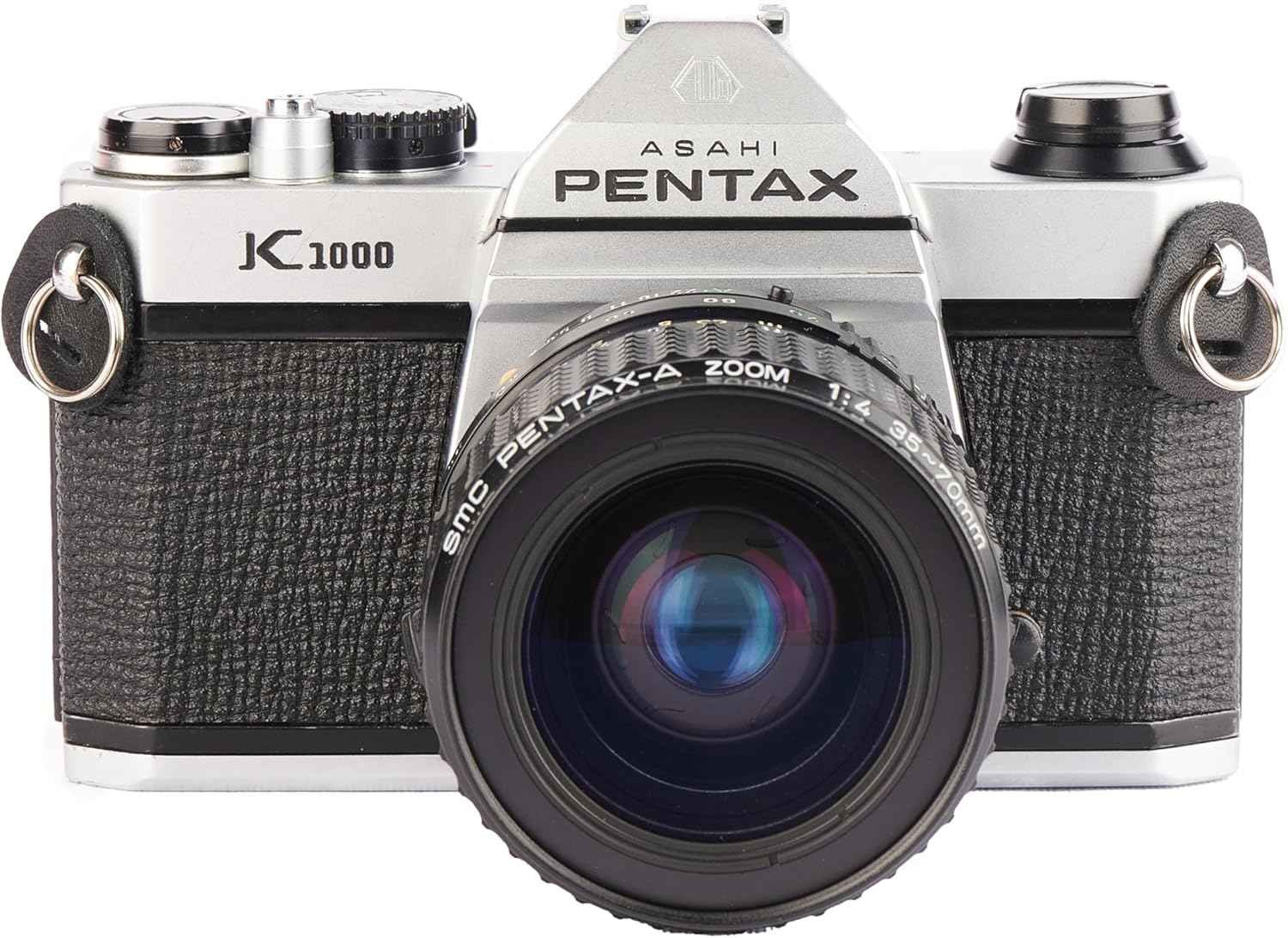
Pentax K1000
Simple 35mm SLR, manual focus, straightforward controls.
Why it’s good:Excellent for learning the fundamentals of exposure and photography with a film camera in 2026.
Pros:
Affordable.
Full manual gives you control.
Cons:
No automatic exposure modes.
Slightly heavier than modern point-shoots.
Ideal for: Students, beginners or those wanting to practice analog.
Olympus OM-1
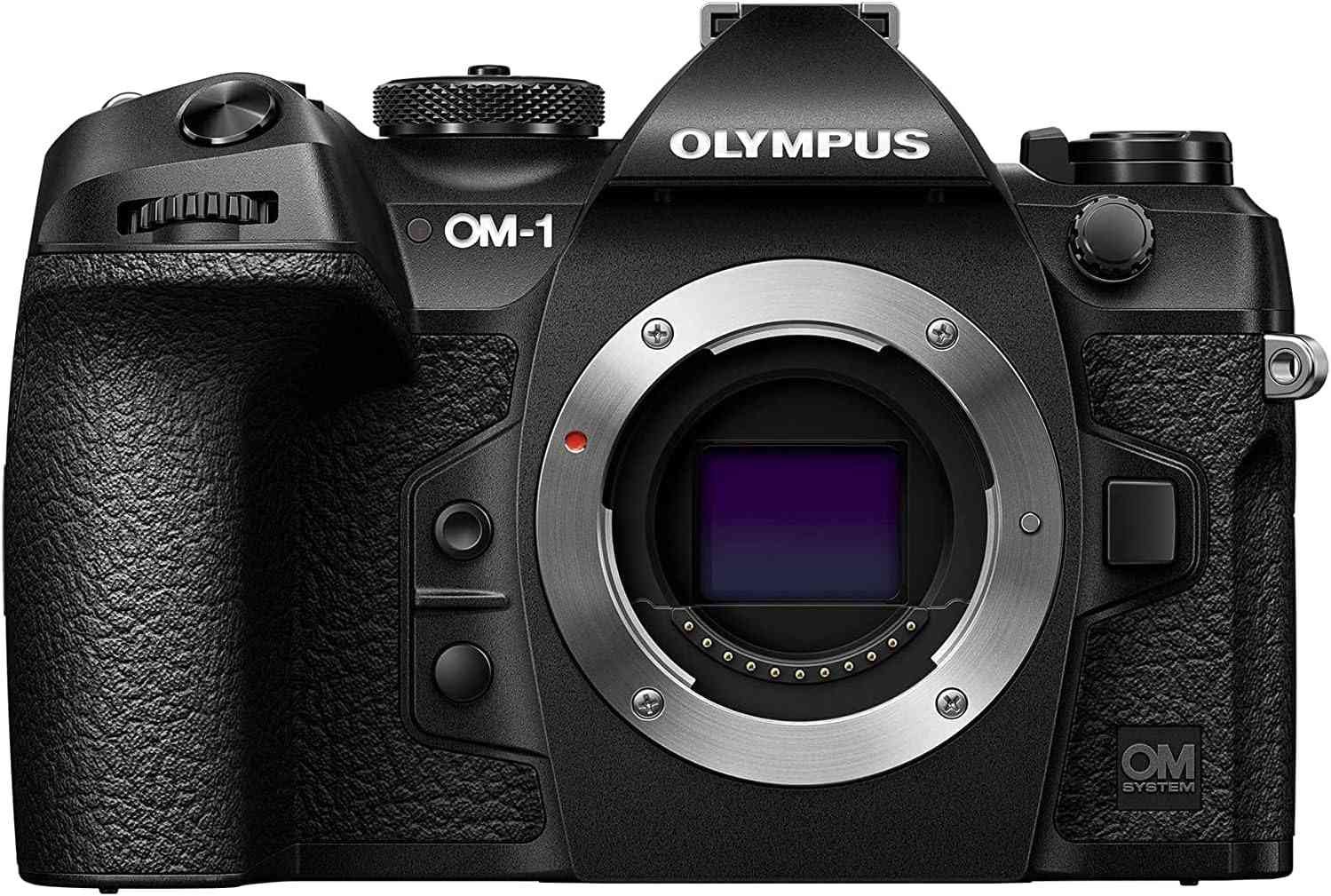
Olympus OM-1
Compact SLR; known for high quality Zuiko optics; smaller body for travel.
Why it’s good:Ideal if you’re travelling light through Nepal, exploring cities or landscapes.
Pros:
Lightweight, good lens quality.
Quiet shutter, less obtrusive.
Cons:
Some older models require mercury battery replacement/adapters.
Ideal for: Street & travel photographers using a film camera in 2026.
Leica M6
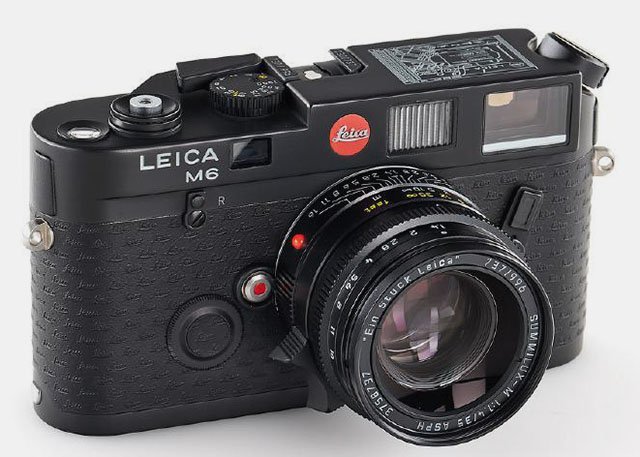
Leica M6
Premium 35mm rangefinder; Leica M mount; expensive but elite build and image quality.
Why it’s good:For serious analog enthusiasts who want the best experience with a film camera in 2026.
Pros:
Unmatched quality, holds value.
Rangefinder is quiet and compact.
Cons:
Very expensive; lenses add cost.
Manual focusing and exposure learning curve.
Ideal for: Pros or dedicated hobbyists investing in classic gear.
Fujifilm Instax Mini Evo

Fujifilm Instax Mini Evo
Instant/hybrid camera using Instax Mini film; offers lens/film effect variations.
Why it’s good:For those wanting analog feel with social fun print instantly, share on the spot.
Pros:
Easy to use, fun prints.
Modern features plus analog feel.
Cons:
Print size is small.
Running film cost.
Ideal for: Travelers, social events, creative photo-journalism.
Contax T2

Contax T2
Compact 35mm point & shoot with premium fixed Zeiss lens often a status analogue film camera in 2026.
Why it’s good:When you want full control in a pocketable body, ideal for street and travel.
Pros:
Excellent image quality.
Compact.
Cons:
Costly in used market.
Fixed lens limits flexibility.
Ideal for: Travel photographers who want premium results with minimal gear.
Minolta X-700
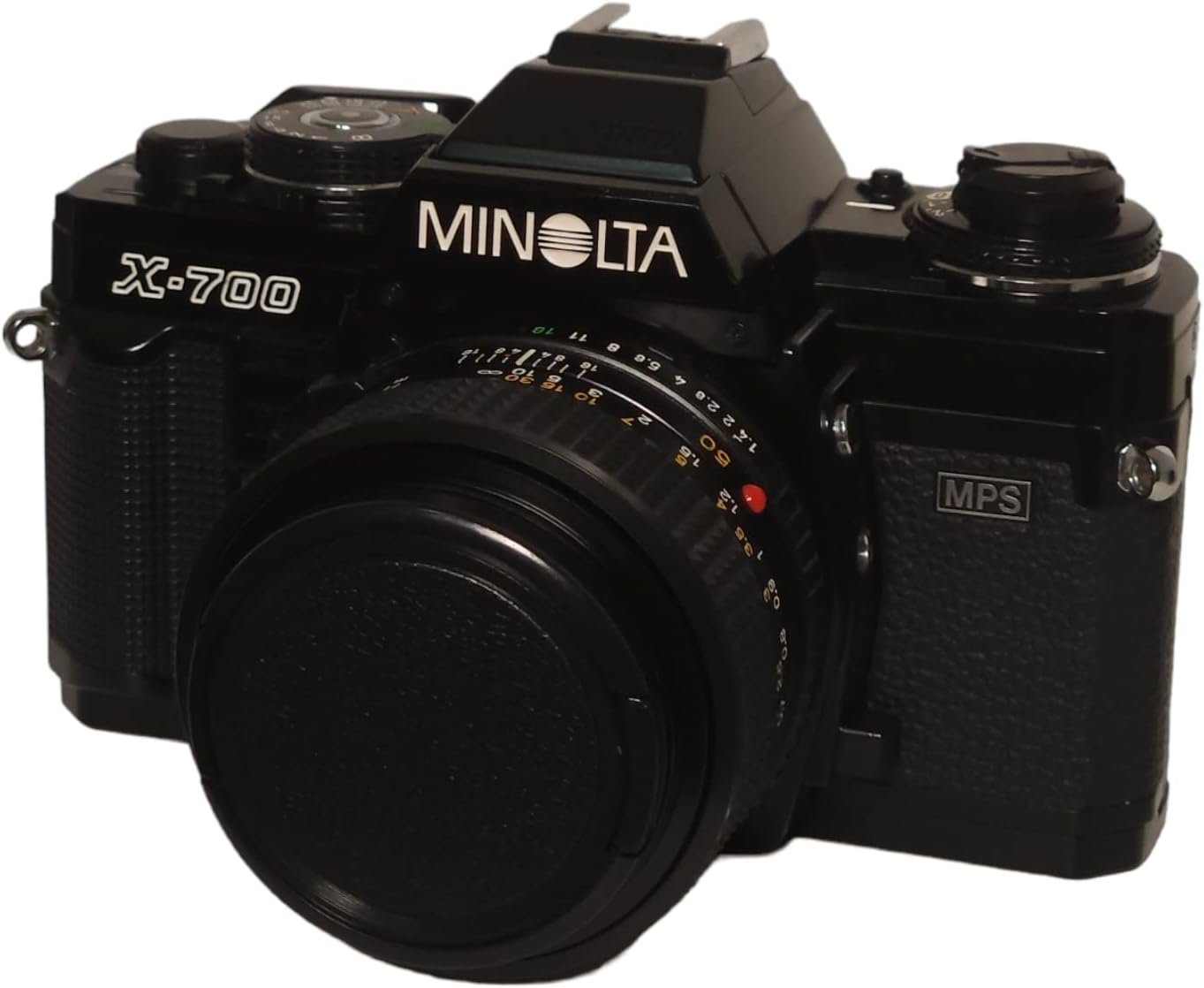
Minolta X-700
35mm SLR with Program/Aperture/Manual modes; Minolta MD mount.
Why it’s good:A balanced film camera offering intermediate features at a modest price.
Pros:
Versatile exposure modes.
Good lens ecosystem.
Cons:
Slightly older electronics; some repair parts may be harder.
Ideal for: Photographers ready to move beyond beginner gear.
Kodak M35

Kodak M35
Simple 35mm reusable point & shoot; fixed-focus, ultra-budget friendly.
Why it’s good:Lightweight, easy to carry on travel shoots when you don’t want heavy or complex gear.
Pros:
Very affordable.
Easy to use.
Cons:
Limited control, fixed focus.
Ideal for: Casual shooters, travellers experimenting with analog.
Lomography Simple Use Film Camera
Creative reusable 35mm camera pre-loaded with film; includes colour filters and fun features.
Why it’s good:- Great for creative/experimental work with a film camera in 2026 without investing in heavy gear.
Pros:
Very beginner friendly.
Creative effects.
Cons:
asic lens.
Not suitable for professional results.
Ideal for: Beginners, travel journaling, fun analog experiments.
Film Format, Stocks & What to Consider Before Buying a film camera in 2026
Film formats
Understanding film formats makes a big difference:
35mm (135) is by far the most common and easily processed worldwide. lomography.com+1
Medium format (120, 220) offers larger negatives, more resolution and tonal gradation—but the gear is bulkier and film + processing cost higher.
Instant formats (Instax, Polaroid) are fun, immediate, but produce smaller images and often higher running costs.
What to check when buying a used film camera in 2026
When selecting a used piece of gear, you want to be sure of mechanics, condition and support. From Reddit discussions:
“Keep in mind some film camera from the 80s and 90s need a battery to take an image … Other film camera are mechanical … which is nice.” Reddit
“If you come across a camera that hasn’t been looked over … good chance the light seals will have deteriorated …” Reddit
Key points:
Shutter & advance mechanisms: Do they function across full range (fast & slow speeds)?
Light seals and foam: Deterioration often causes light leaks or fogged frames.
Lens & viewfinder condition: Haze, scratches or fungus degrade image quality.
Battery & electronics: Some older bodies need odd battery types or adapters.
Film & developing availability: Using a film camera in 2026 for shooting means ongoing cost film rolls, development, scanning.
Lens mount & ecosystem: If you’re buying an SLR film camera, check lens availability, cost and mount compatibility.
Travel suitability: Consider weight, durability, battery dependence, ease of service (important for remote locations like Nepal).
Matching film stocks & shooting conditions
Film choice matters. A beginner load: ISO 200-400 colour negative for general daylight; high ISO or black & white if low light. The article at B&H notes:
“There are different types of film cameras, and understanding how they work will help you find the one that’s right for you.” B&H Photo Video
And from Reddit:
“The film need to be the right size and format to fit your camera (e.g. 35mm film goes in a 35mm camera)…” Reddit
In short: match film format to camera, pick film speed suited to your lighting conditions, shoot thoughtfully.
Tips for Using Your film camera on the Road or in Everyday Scenes
If you’re using your film camera in 2026 for travel in Nepal, urban scenes or creative experimentation, these tips help you get the most out of it:
Choose 35mm format: It’s most accessible, rolls & developing widely available.
Limit your gear: Carry a lightweight film camera, maybe one lens (if SLR), or a compact point-shoot so you’re not weighed down on treks.
Slow down your shooting: Because you have limited frames, you’ll think more about composition, lighting and subjec this is part of the charm of a film camera in 2026.
Meter & expose carefully: Accuracy helps avoid wasted frames.
Store roll properly: Unused film should be kept cool & dry; shot rolls should be protected from heat/humidity.
Backup plan: Bring extra rolls, battery/spares (if your camera uses unusual battery types).
Scan/print early: Processing sooner helps preserve memory of the moment captured by your film using film camera in 2026 and avoids risk of damage or loss.
Use creative constraints: Limit yourself to 1-2 rolls on a trip, and you’ll find yourself more selective and creative with each frame.
If you’re ready to explore analog photography and want a film camera in 2026 that suits your travel, creative or everyday shooting needs, the ten models above offer a superb spread of price, control and style. Whether you pick an affordable beginner SLR like the AE-1 Program or K1000, a travel-friendly compact like the Contax T2 or Kodak M35, or go all-in with the Leica M6, your experience will be enriched by the tactile feel, anticipation and unique outputs of analog.
The magic of a film camera in 2026 lies not just in the gear, but in the experience: loading the roll, hearing the shutter, developing the negatives, holding prints. In 2025, that experience remains relevant, rewarding and full of creative possibility. So load up your roll, pick your model, and go capture something unforgettable.
If you like the mirrorless camera then you have to check our lated blog about best mirrorless camera for photography and videography

